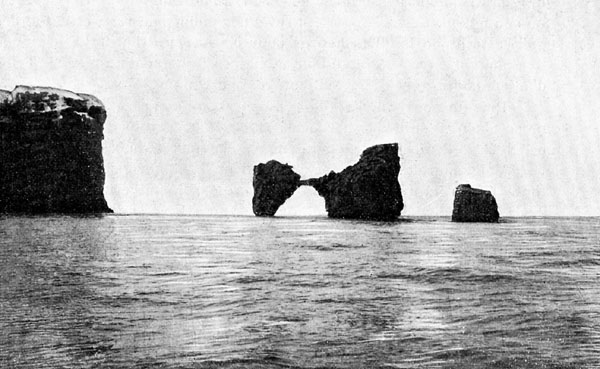 ARNALDO FAUSTINI:
ARNALDO FAUSTINI:
ARCH PIONEER
by David Brandt-Erichsen
From SPAN January 2002
NABS has acquired a remarkable 1918 manuscript entitled Catalogo Descrittivo di Ponti ed Archi Naturali ("Descriptive Catalog of Natural Bridges and Arches") by Italian-born geographer Arnaldo Faustini. It has 946 entries.
NABS now has the complete manuscript available for free download.
Faustini was an accomplished polar geographer, whose ample writings on the Arctic and Antarctic can still be found in the "Faustini Room" of the Museo Polare in Fermo, Italy. His name was even officially placed on one of the craters on the south pole of the Moon.
The unpublished manuscript was kindly donated to NABS by his daughter and grand-daughter. Handwritten in Italian, it comprises 329 pages. In his personal diary, Faustini wrote:
Completed under every standpoint, for a future, eventual publication – text, topographical sketches, illustrations, contents, indexes, etc., that I think to be my greatest work of physical geography: "Ponti ed archi naturali distributi e fino adoggi conosciuti (1918) nelle vane parti delmondo" [Descriptive Catalogue of Natural Bridges and Arches up to 1918 and Distributed All over the Countries of the World]. More than 950 units, about 650 illustrations, and several maps. Work absolutely original.
The "650 illustrations" were likely planned, but the manuscript only contains 220 illustrations.
The work is a bibliographical compilation, providing a descriptive listing and bibliographical references for each entry in his Catalog. All illustrations were obtained from other published sources. None of the descriptions were based on actual field work (and of course it would have been impossible then, as it still is, for any one person to do field work on all these arches, dispersed as they are all over the world). Nevertheless, this must certainly have been the most thorough compilation of natural arches in its day, and represents an impressive feat of scholarship. Even now, many of the listed arches outside the U.S. have not been cataloged and this reference would be a useful source on where to look for them. The book includes a significant number of arches around the world:
|
Europe Greater Asia Africa Canada United States Central America South America Oceania Polar Regions |
347 105 34 26 266 28 47 39 29 |
Of the European arches listed, 108 of them were in France, a number of which were readily recognizable from the NABS France Convention, including Le Pont d'Arc, Porte de Mycenes, Arc de Triomphe, Le Baousse del Biel, and Grand Arc.
The work of course suffers from what any bibliographic work would inevitably suffer from – and that is that the sources consulted are very often incorrect as well as incomplete. Those of us in NABS have certainly learned that this is all too frequently the case. Sometimes the inadvertently perpetuated misinformation should be obvious, such as the reporting of a span in Arizona at 450-500 feet. Other times it is more subtle. As a case in point, what we now call Window Rock in Window Rock, Arizona, was illustrated twice, with a photograph from each side – but it was also listed twice, as two different arches (in different counties, no less). With the sparse published descriptions of the arch's location, there is certainly no way that somebody from afar could tell that these were actually the same arch (see illustration below).

Entry #514 in the Faustini manuscript is Window Rock, Arizona, as seen from the "back" side.
If anyone knows of a way to get all or part of this manuscript translated into English, please let us know. The handwriting, however, will make the task a very difficult one. The entries for the U.S. would only be of historical interest, but the cataloging of arches outside the U.S. has yet to be equaled, with the notable exception of France [and Algeria]. Three examples are below.
A special thanks to Liz Arnold-Nysven and Linda C. McKinlay for donating this manuscript to NABS.

Entry #354, "PONT NATUREL SUR LE MONT LIBAN," is in the
Middle East.
The horses atop provide scale.

Entry #488, natural arch near Dease Thompson Point, Northwest Territories, Canada.

Entry #916, "ILE DÉCEPTION, LA ROCHE PERCÉE."
[This arch collapsed in an earthquake in 1924 and the remains are known as
Sewing Machine Rocks. Deception Island is off the eastern coast of Antarctica.]